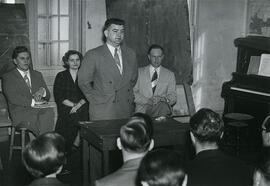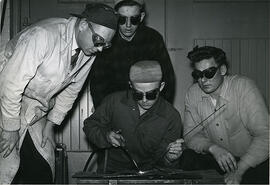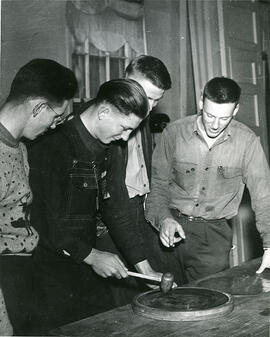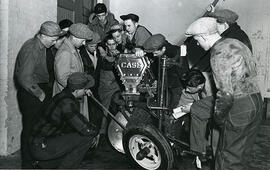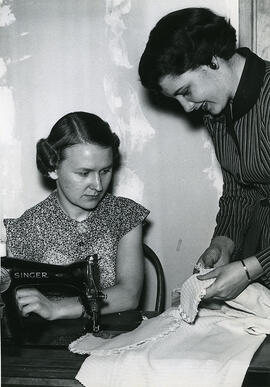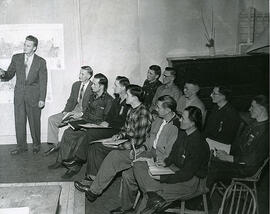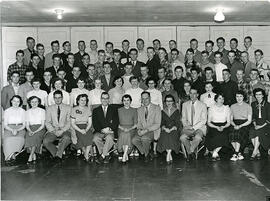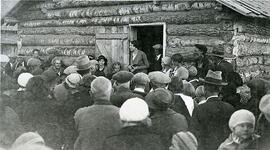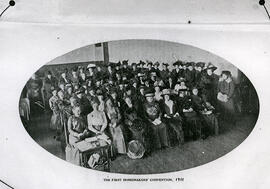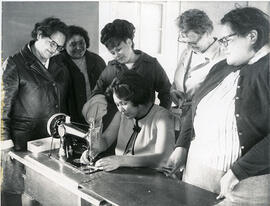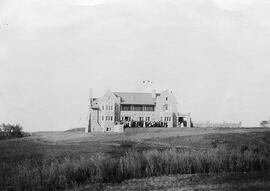Dominion-Provincial Youth Training Program - Prince Albert
- A-3797
- Item
- 1954
Dominion-Provincial Youth Training School opening in Prince Albert. On back of photograph: "The official opening of the eighth annual Co-Educational Youth Training School at Prince Albert. D.F. Kelly (standing), manager of the P.A. Agricultural Society is making the opening address. Seated behind him are (l to r): Fred Fulton, instructor in charge of the school, Miss Nellie Patson, Saskatoon, supervisor of Girls Youth Training for the Province and Harry Lang, assistant Agricultural Representation and chairman of the Youth Training Committee for the Prince Albert Agricultural Society. Dominion Provincial Youth Training".

